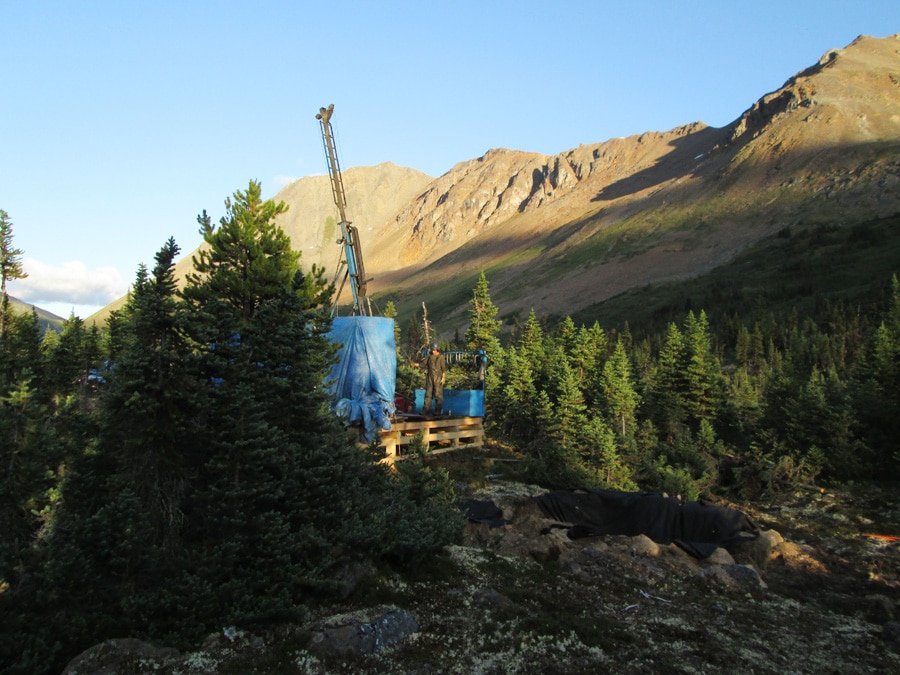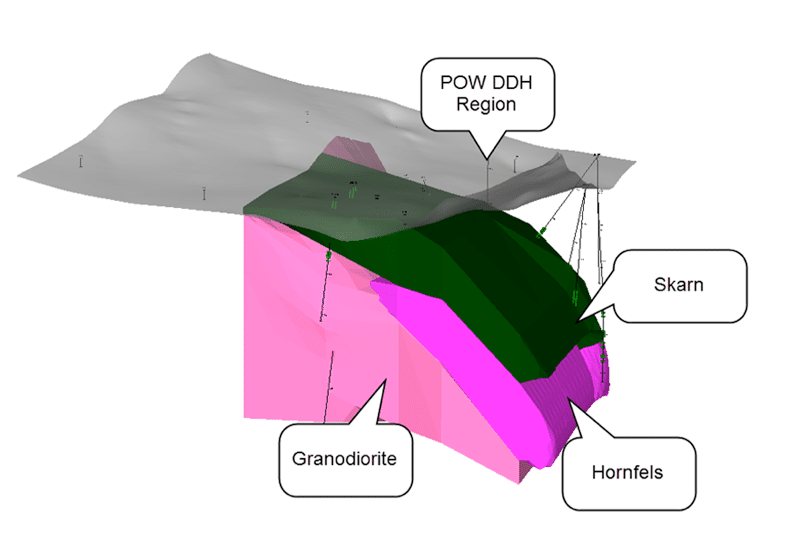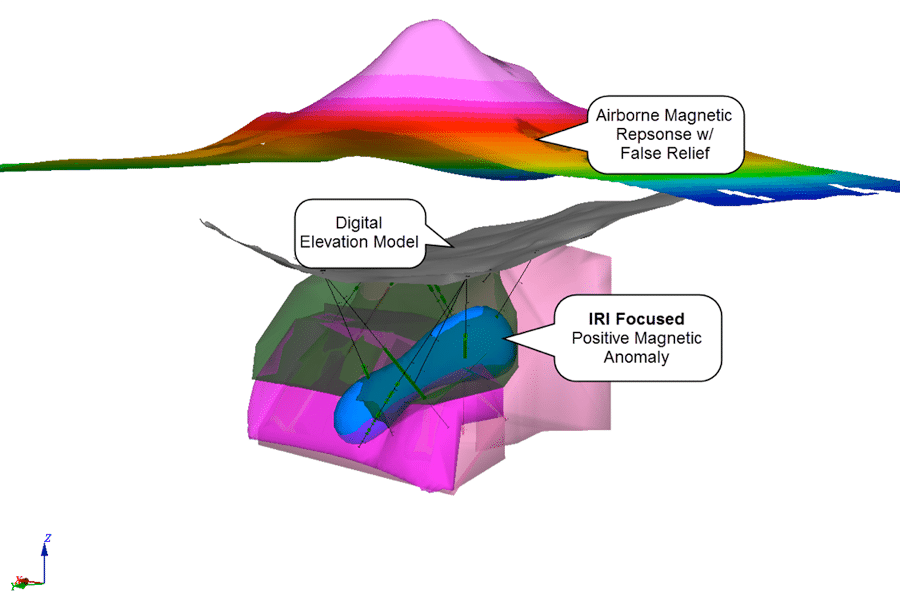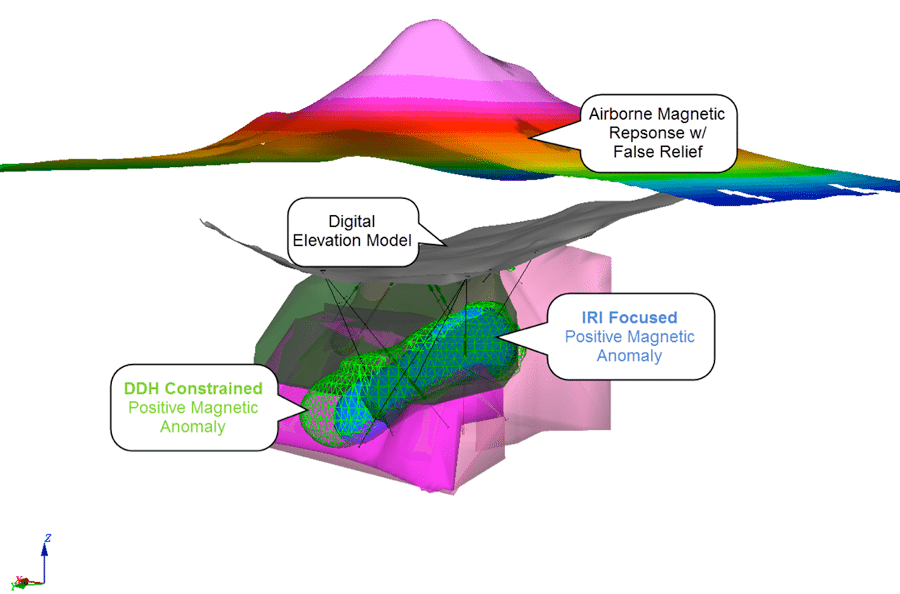Drillhole planning can be a high-risk venture when the available information is limited to airborne geophysical results. But Aben Resources found a way to reduce that risk considerably by using 3D inversion to guide exploration on the Justin project, one of the more intriguing plays to emerge from the recent resurgence in Yukon gold exploration.
The Justin Project is located in an emerging gold district in the southeast Yukon, historically known for its proximity to the Cantung tungsten mine. The property contains significant intrusion-related gold (IRGS) mineralization similar to the Eagle Gold deposit (resources of 6.3 mn ounces), also in the Yukon, and the Fort Knox deposit in Alaska (reserves of 4.3 mn ounces).

The property’s most prospective regions are alteration zones that formed when a granodiorite stock intruded into calcareous limestone. Mineralisation consists of zones of skarn style replacement overprinted by quartz calcite stockwork veining. Both the skarn style and vein style mineralisation contain anomalous gold values.

In 2011 Aben launched a 10-hole 2,000-metre drill program on a shallow skarn on Justin. The POW zone, as it is now known, returned a 60 m intersection grading 1.19 g/t gold including 21 m of 2.47 g/t gold. A follow-up program in 2012 expanded the IRGS system at POW considerably.

Commissioned to find other targets similar to POW on the 18,000-acre property, consultant Terralogic Exploration used Geosoft’s wireframing tools to create a 3D geological model of the zone from drill results. The company then employed the wireframe model to validate magnetic results from a survey flown over the whole property. The resulting combination of geology and geophysics successfully delineated several new high quality targets with a minimum of time and effort.
How did Terralogic delineate drill ready targets with such limited geological information? The consulting firm used VOXI Earth Modelling, Geosoft’s new geophysical inversion modeling program, to compare its geophysics results against the drillhole geology quickly and easily.
“Because we had success targeting the POW zone with the magnetic data, it seemed like a natural fit to work through the VOXI modelling process in other areas that had a magnetic signature but very little outcrop,” says Terralogic geologist Mike McCuaig.
From uncertainty to confidence
Collaborating closely with Geosoft, Terralogic ran an unconstrained magnetic inversion of the airborne survey results. Then the team compared the unconstrained inversion to the wireframe model of POW’s geology created in Oasis montaj.
When the two didn’t match, Geosoft went back to the drawing board to create a more realistic rendering of the geophysical results using VOXI’s Iterative Reweighting Inversion Focusing (IRIF). The result was a sharper geophysical model that better matched what the company knew from drilling.

As a final step, Geosoft built a more complex model using drillhole geology to provide structure to the geophysical inversion. Since both methods matched the geophysical response with the known geology, Terralogic had the confidence to apply the IRIF method to areas of limited outcrop that had a similar magnetic signature to the POW zone.
McCuaig says the process of groundtruthing the geology with the magnetic data at the known zone, and then applying the results to the rest the property took only a few days. “Now we have high confidence in areas outside the known mineralization that Aben can test with drillholes in the future” he says.

The new targets generated for Aben using this approach demonstrate the value of VOXI, which allows geologists and geophysicists to collaborate on a cloud-based software platform designed to encourage iterative interpretation using all the pieces of the exploration puzzle.
The VOXI software service helped to overcome the complexity and frustration inherent in conventional 3D inversions by speeding up the process and making it accessible to all geoscientists with an understanding of geophysics.
“The beauty of Geosoft VOXI is that as you learn about a property, you can add those measurable rock properties to the model and constrain it even further,” says McCuaig. “It’s a very quick and efficient way to assess large tracts of ground given the right exploration target.”
The next episode
The downturn in the mining industry has hit the junior sector particularly hard and Aben is no exception. Once the market returns to life, Aben plans to raise the funds to continue working on Justin. Drilling the targets delineated by VOXI will be one of the company’s top priorities.




